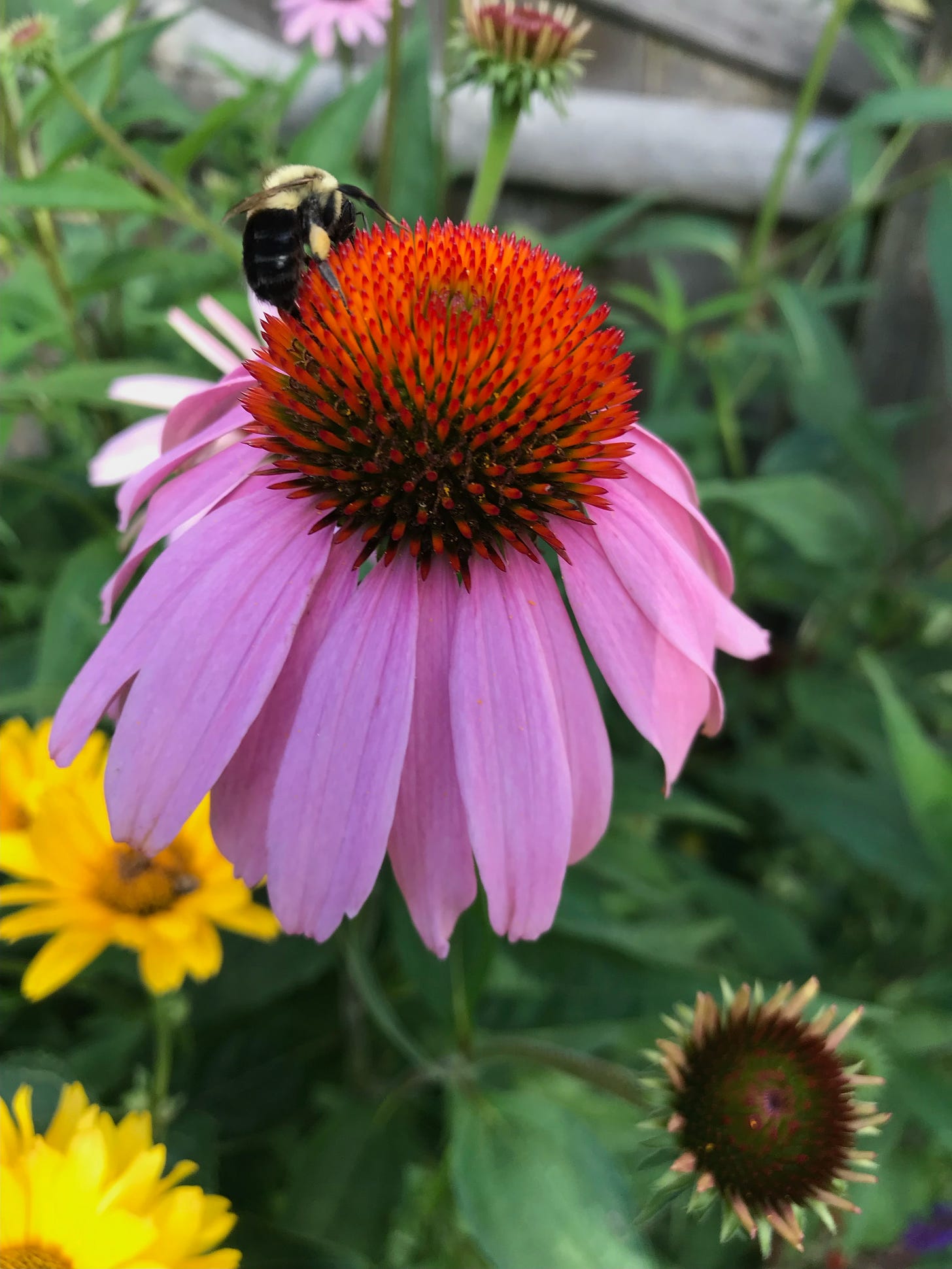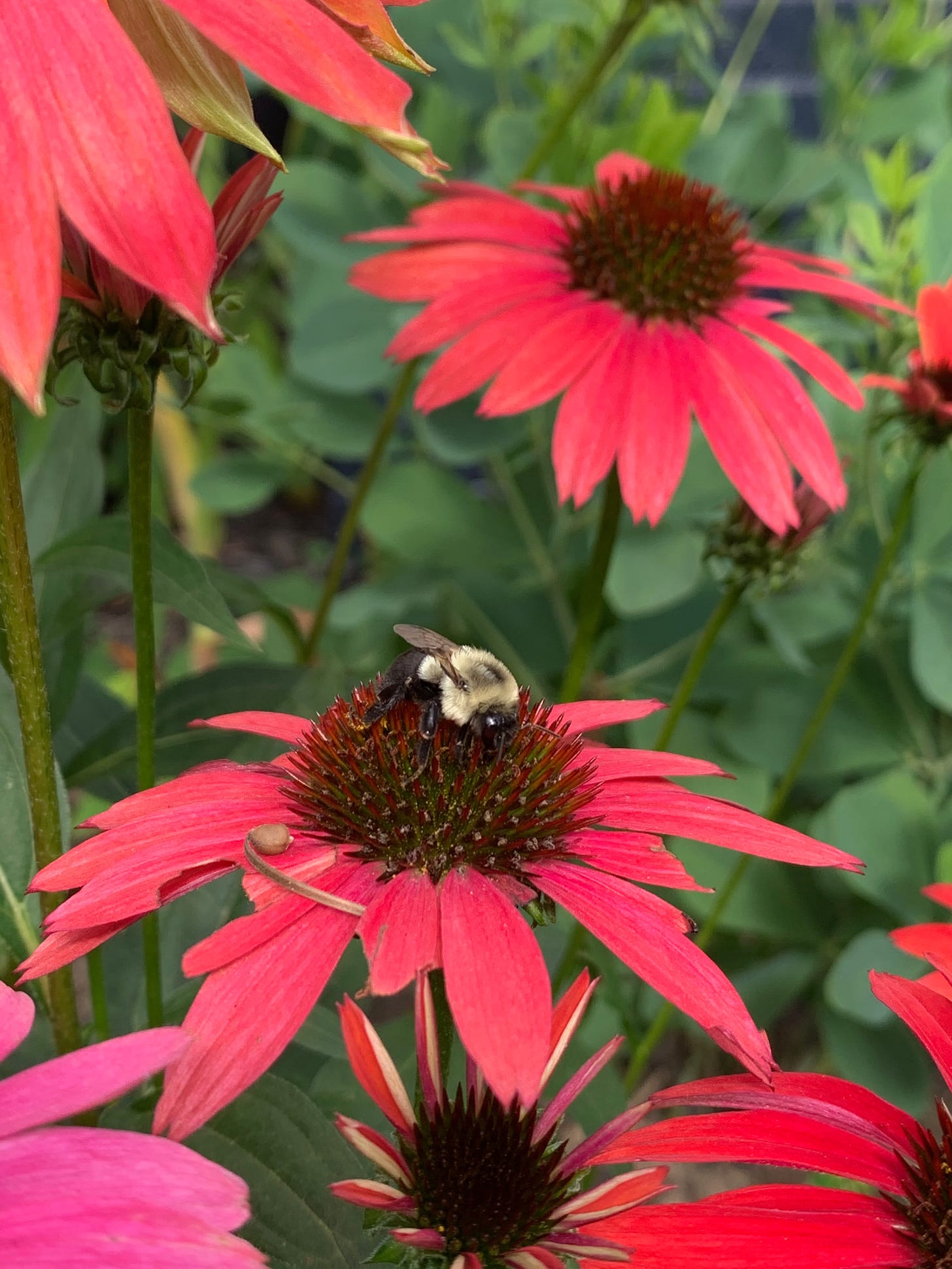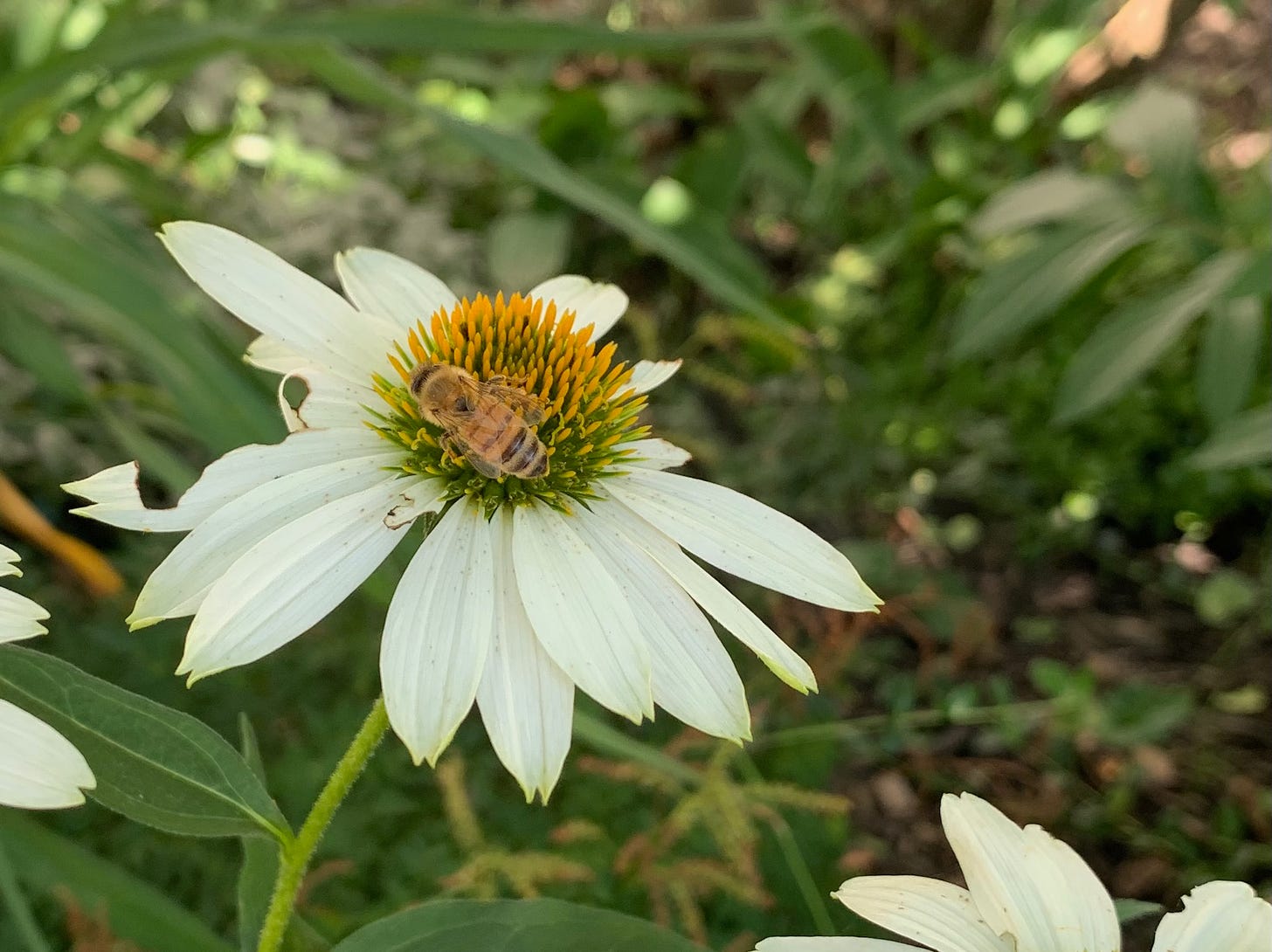The Poet Gives a Science Lesson
And how all the parts of my week came together to write this poem
A few things happened this week which informed the writing of this poem. First, my husband shared with me a video of Sir David Attenborough explaining something fascinating about the relationship between flowers and bees.
We are avid gardeners. Ever since we moved to our current home, we have carved away at the lawn in our long, narrow in-town lot each year, adding more and more flowering plants and trees. Eventually lawn will become mere path with a lobe here and there just big enough to hold a few chairs. We are cognizant of the current threat to bees and other pollinators and avoid anything that might harm them. I pick the red beetles off the lilies by hand and the strongest thing I use to deter pests is a bit of peppermint or tea tree oil mixed with water. This video was fascinating and a revelation for me.
The second thing was that I had my first piano lesson in more than forty years. I took lessons for a while as a child. I enjoyed it. I really like doing things with my hands. I’d happily add a long column of figures for you on an adding machine. I love cash registers, and typing may have been my favorite class in high school. I always feel a little out of my depth around musicians, but that urge to put my fingers on the keyboard and play is strong.
Long after I’d given up lessons as a child, I would noodle on the piano at home, trying to teach myself songs from my mother’s books of sheet music. One day in early adolescence I asked if I could start lessons again. It was an ill-fated enterprise. The teacher my mother found was sour and humorless and I dreaded my lessons each week. I didn’t last long. But recently I decided I’d give it another go and I feel fortunate to have found a teacher who is neither sour nor humorless. I cannot wait to practice my lesson for next week.
The third thing was an article shared by
in her most recent Commonplacing post for . It told the story of much maligned Victorian scientist Gustav Fechner who came to believe that plants have souls. It’s a fascinating piece. One passage in particular stuck with me:“So, that plants differ from humans and animals in structure and function does not prove they lack souls. Rather, they are differently ensouled.
Fechner imagines that plants could apply their own soul criteria to humans and find us lacking. Plants may assume, based on their own experience, that the soul is evidenced by a capacity to self-generate and self-adorn, to create one’s body leaf by leaf. But humans must ‘leave our body as it is’ and don external garments. In addition, the plant is sessile; we run about. ‘The oak,’ he writes, ‘could easily turn our arguments against her soul back against ours.’ To plants, we must look very soulless.”
After the David Attenborough video, my husband and I have marveled at this secret life of flowers, something we’d never imagined. Science lets us give sound to those electric fields, making a kind of music, which is wonderful. And I love the idea that, as we sit in the garden of an evening, chatting about the day, one flower might whisper to another, “It’s almost like they are communicating with each other.” And its friend might scoff and say, “Bah! Those dolts? Impossible!”
So all of these things were poured and shaken together during my week. The result is this little cocktail I’ve poured for you. Maybe take it to a garden and read it there.
The Poet Gives a Science Lesson (with thanks to Sir David Attenborough) A flower can talk to a bee using a negative charge it borrows from the earth and amplifies up the length of its stem (Imagine the cup of a petunia as a gramophone for energy) That negative field can be translated to sound by a tiny electrode, giving voice to a blossom (What would a field of flowers sound like if we could listen to them all sing together?) The friction of a bee's wings generate a positive charge, which begins to interact with the flower's negative field as the bee draws close, causing the sound to change (A duet of bee and bloom duplicated across a meadow, each note a collaboration) When the bee lands on the flower, the positive and the negative cancel each other out and the flower is quiet (Think of that - can't you imagine both bee and blossom giving a small sigh when they meet and the tension of nearness becomes the ease of contact?) And at that moment pollen, with a negative charge, springs from the flower and attaches itself to the bee, changing the sound of the flower's charged field, and telling the next bee it will find no nectar here (So each bee must know each flower's song by heart to hear the difference. I think I will never hear the buzz of a bee again without imagining it is humming a favorite tune learned from a former love)
Thank you all for being here and reading. It means so much. 🐝







Beautiful poem, Tara!
I used not to understand that bee and flower go together, arose together. Neither makes sense without the other. Their function is shared. Two distinct leaves of the tree of life, with fairly different branches behind them, meeting again in electric matrimony.
Now I understand that not only did bee and flower originate as one, but so did electric charge itself, in the grand scheme of things. Compared to the age of the universe as it will eventually be, trillions of years from now, all of what we see around us is brand new, and simply different facets of the same single thing/event which really just began. What a beautiful baby this universe is.
I recently wrote a sonnet that begins with the relationship between bee and flower: https://mikesperiosu.substack.com/p/computational-cosmos
You might enjoy it. (No hard feelings if you don't get around to reading it!)
Fascinating — truly enjoyed this wonderful and enlightening poem (and the thoughtful intro as well). And such a great title for the poem!